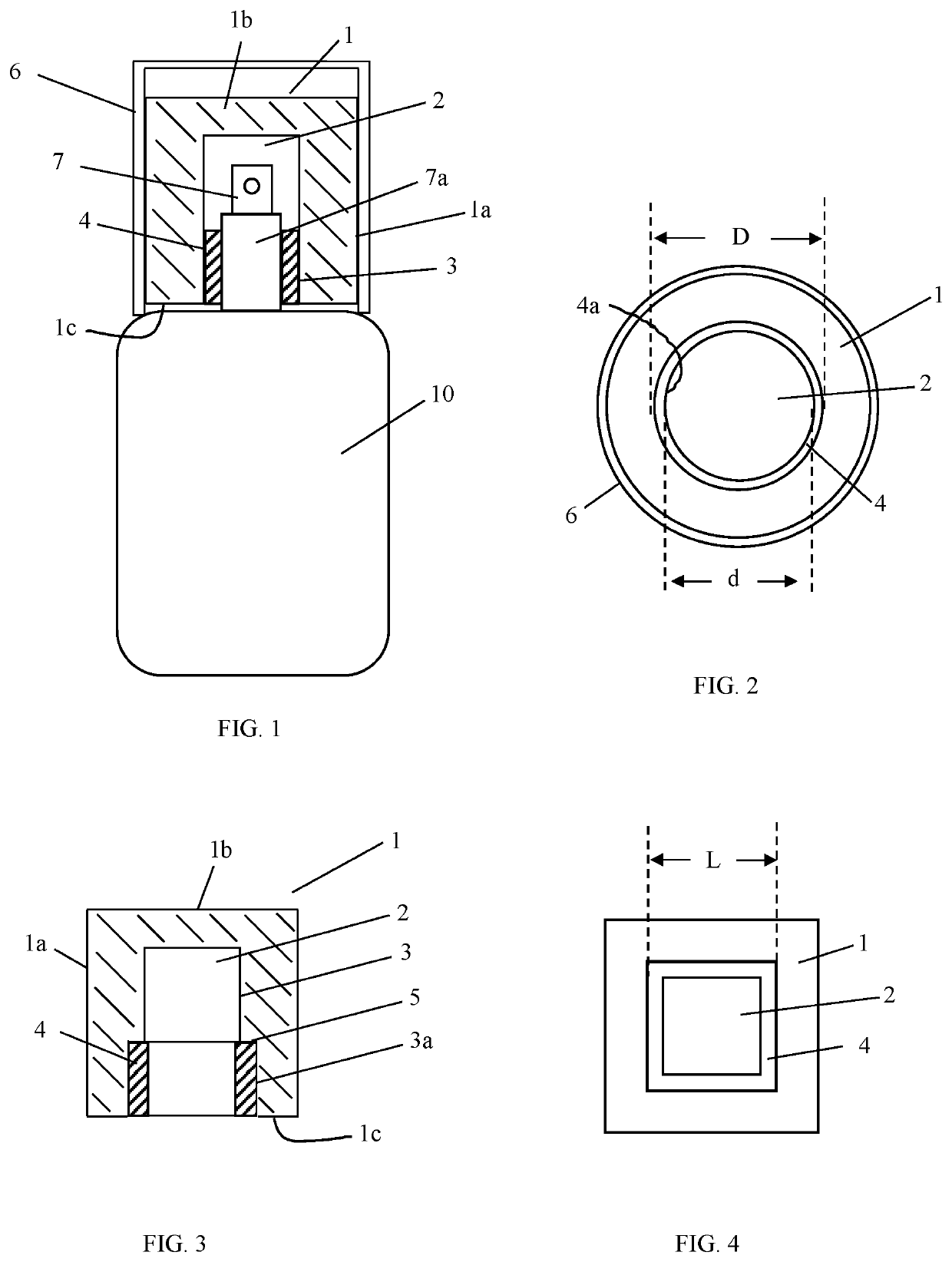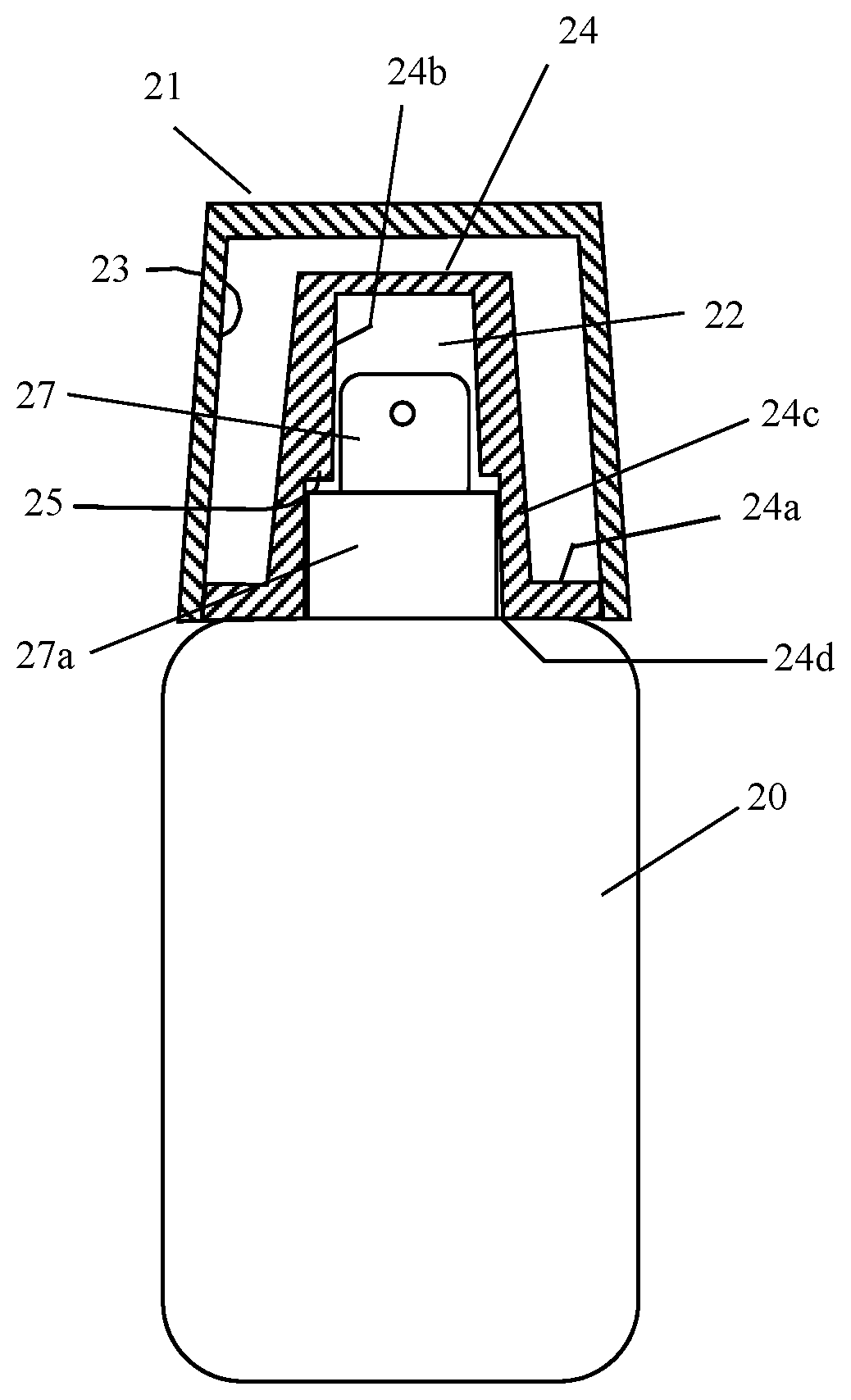Cap With Cork Insert
a technology of cork insert and cap, applied in the field of friction fit caps, can solve the problems of cost, and achieve the effect of reducing the amount of plastic and reducing the carbon footprint of any cap
- Summary
- Abstract
- Description
- Claims
- Application Information
AI Technical Summary
Benefits of technology
Problems solved by technology
Method used
Image
Examples
first embodiment
[0016]Referring to FIGS. 1 and 2, a container (10) is closed by a pump dispenser (7) that supports a collar (7a). A friction fit cap according to the present invention comprises an outer cap (1), a cork insert (4) and an optional overshell (6). The outer cap has one or more side walls (1a), a closed top (1b) and an opened bottom (1c) that, together, define an interior (2). The interior is able to receive the collar (7a) of the pump dispenser (7). The one or more side walls form an inner surface (3) that faces the interior of the outer cap. Preferably, the cross sectional shape of the inner surface will match the cross sectional shape of the collar. In the embodiment of FIGS. 1 and 2, the inner surface (3) and may be understood to be cylindrical, and characterized by a diameter, D, but this shape is not essential, so that the inner surface formed by the one or more side walls may be non-cylindrical. An insert (4) in the form of a cork strip or cork liner is affixed to a portion of th...
third embodiment
[0021]the invention is represented in FIG. 5, where a container (20) is closed by a pump dispenser (27) that supports a collar (27a). This embodiment does not use a strip of cork liner. Rather a machined cork component is used as an insert for an outer cap. Referring to FIG. 5, an outer cap (21) has an inner surface (23) that supports a cork insert (24). A lateral portion (24a) of the cork insert is affixed to the inner surface of the outer cap by an adhesive or other means. The cork insert is machined to have an opened bottom (24d) and an interior (22) that is bounded by an inner surface (24b). The interior is able to receive the collar (27a) of a pump dispenser (27) by forming a friction fit engagement between the collar and a portion of the inner surface (24b). The engagement is such that the cap will not separate from the collar if the container (20) is inverted. Preferably, the cross sectional shape of the inner surface (24b) of the cork insert will match the cross sectional sh...
PUM
| Property | Measurement | Unit |
|---|---|---|
| thickness | aaaaa | aaaaa |
| width | aaaaa | aaaaa |
| thickness | aaaaa | aaaaa |
Abstract
Description
Claims
Application Information
 Login to View More
Login to View More - R&D
- Intellectual Property
- Life Sciences
- Materials
- Tech Scout
- Unparalleled Data Quality
- Higher Quality Content
- 60% Fewer Hallucinations
Browse by: Latest US Patents, China's latest patents, Technical Efficacy Thesaurus, Application Domain, Technology Topic, Popular Technical Reports.
© 2025 PatSnap. All rights reserved.Legal|Privacy policy|Modern Slavery Act Transparency Statement|Sitemap|About US| Contact US: help@patsnap.com


